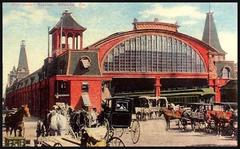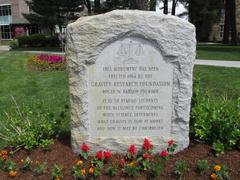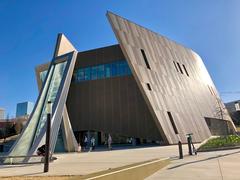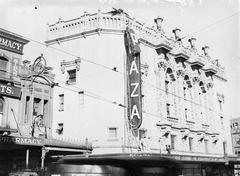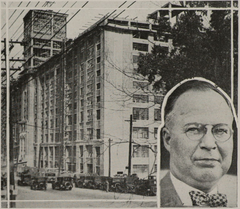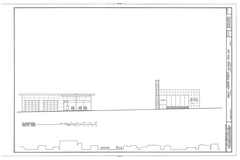
Terminal Station Atlanta Visiting Hours, Tickets, and Travel Guide
Date: 03/07/2025
Introduction
Terminal Station in Atlanta, Georgia, stands as a testament to the city’s rise as a transportation epicenter of the American South. Opened in 1905 and designed by architect Thornton Marye, this grand Beaux-Arts railway terminal symbolized Atlanta’s ambition and growth, serving as a vital gateway for commerce, migration, and culture. Though demolished in 1972, Terminal Station’s legacy endures through surviving architectural elements, commemorative landmarks, and digital archives that continue to shape Atlanta’s urban identity.
While the original structure is gone, the location and surrounding district remain accessible and rich with historical context. This guide offers a thorough exploration of Terminal Station’s history, architectural significance, socio-economic impact, and enduring cultural memory. It also provides practical visitor information, travel tips, and recommendations for related attractions to help you experience Atlanta’s railroad heritage firsthand.
For additional research and historical imagery, consult the Emory ScholarBlogs Terminal Station archive, Great American Stations project, and the Digital Library of Georgia.
Contents
- Introduction
- Origins and Early Development
- Construction and Architectural Significance
- Role in Atlanta’s Growth
- Notable Events and Cultural Impact
- Decline and Legacy
- Visiting Terminal Station Today
- Travel Tips and Accessibility
- Architectural and Cultural Remnants
- Socio-Economic and Cultural Legacy
- Commemoration and Remembrance
- Visitor Information
- Visuals and Media
- FAQs
- Conclusion
Origins and Early Development
Atlanta’s roots are intertwined with the railroad. Founded in the 1830s as the terminus of the Western and Atlantic Railroad, the city’s original name, “Terminus,” reflected its critical role as a rail hub (Wikipedia: History of Atlanta). By the late 19th century, Atlanta had become a major junction for multiple lines, spurring urban growth and economic dynamism.
As the city expanded, the need for a larger, more modern passenger terminal became clear. The original Union Depot (1853) was soon outpaced by demand, prompting plans for a new facility that would reflect Atlanta’s status as a Southern metropolis.
Construction and Architectural Significance
Terminal Station opened in May 1905, a project that cost $1.6 million—a substantial investment in Atlanta’s future (Emory ScholarBlogs: The Opening of Terminal Station, 1905). Architect Thornton Marye’s design drew on Beaux-Arts principles, featuring an imposing façade with marble from Marietta, elegant arches, a grand rotunda, and cutting-edge amenities for the era, such as incandescent lighting, flush toilets, and mechanical baggage elevators.
The station’s train shed and adjacent office buildings (notably the Southern Railway office at 99 Spring Street) reinforced its role as both a functional and symbolic hub (Emory ScholarBlogs; Wikipedia).
Role in Atlanta’s Growth
Terminal Station quickly became the anchor of Atlanta’s Hotel District, spurring new hotels, businesses, and entertainment venues. Its location made it the main entry point for visitors from the North and Midwest, reinforcing Atlanta’s reputation as the “Gateway to the South” (Emory ScholarBlogs). The station facilitated the convergence of major rail lines, powering both passenger and freight movement.
The district surrounding Terminal Station became a vibrant urban core, attracting entrepreneurs and entertainers and fostering a cosmopolitan atmosphere.
Notable Events and Cultural Impact
Terminal Station was the backdrop for countless personal and civic milestones. Its opening was celebrated as a new epoch for Atlanta, and during the World Wars, the station played a crucial role in troop movements and homecomings (Emory ScholarBlogs; American Rails). The Jazz Era saw the Hotel District flourish with nightlife, and Terminal Station became woven into the public’s collective memory.
The Samuel Spencer statue, dedicated in 1910 to Southern Railway’s first president, stood as a symbol of Atlanta’s railroading heritage (Wikipedia).
Decline and Legacy
The mid-20th century brought profound change: the rise of automobile and air travel diminished rail’s dominance. By the 1960s, passenger numbers plummeted, and in 1972, the station was demolished as part of urban renewal (Great American Stations: Atlanta, GA Station History). The loss of Terminal Station remains a poignant lesson in the challenges of historic preservation.
Although the physical station is gone, its legacy is preserved in Atlanta’s collective memory, digital archives, and the urban landscape—particularly in ongoing transportation initiatives and redevelopment projects.
Visiting Terminal Station Today
Location:
The former Terminal Station stood at Spring and Mitchell streets in downtown Atlanta, now occupied by the Richard B. Russell Federal Building (railfanguides.us). GPS: 33.752540, -84.397343.
Remnants:
- Spring Street Tower: The 1905 switch tower still stands as a testament to the station’s operational history (railfanguides.us).
- Surviving Platform: Portions of the original platform remain, though access is limited due to the federal property.
- Zero Mile Post: Once near Terminal Station, this historic marker has been moved for preservation, with ongoing discussions about its return (terminalstation.org).
Nearby Attractions:
- Atlanta History Center: Exhibits on transportation and city development (Atlanta History Center).
- Fox Theatre: Another Thornton Marye landmark.
- Martin Luther King Jr. National Historical Park: Explores civil rights history (Martin Luther King Jr. National Historical Park).
- Centennial Olympic Park, Georgia State Capitol, AmericasMart: Additional attractions within walking distance.
Travel Tips and Accessibility
- Getting There: MARTA’s Five Points station (Red/Gold and Blue/Green lines) is within walking distance (itsmarta.com).
- Parking: Public garages and lots are nearby. Rates and availability vary.
- Accessibility: Sidewalks and transit stations are generally ADA-compliant; some surfaces may be uneven.
- Restrooms: No public restrooms at the site; use nearby attractions or MARTA stations.
What to See and Do
- Walk the Perimeter: Explore the area around the Richard B. Russell Federal Building to view remnants and interpretive markers.
- Photograph the Spring Street Tower and platform remains.
- Use digital archives: Compare historic photos with the present (returntoatl.blogspot.com).
- Attend Tours: Join local history tours that include the Terminal Station site.
Safety and Etiquette
- Federal Property: Remain outside restricted areas. Photography of historical features is allowed, but avoid photographing security operations.
- General Safety: Downtown Atlanta is safe during the day; exercise caution after dark.
Socio-Economic and Cultural Legacy
Terminal Station’s impact extended far beyond transportation. It drove economic growth, created jobs, and transformed Atlanta into a diverse, dynamic city. The station facilitated migration, especially during the Great Migration, and played a role in the civil rights movement by highlighting issues of segregation in public spaces.
The decline of rail and subsequent demolition of Terminal Station led to urban renewal efforts that reshaped downtown Atlanta—sometimes at the expense of historic neighborhoods and social fabric. Today, the station’s spirit influences modern transit projects like MARTA and the Atlanta BeltLine.
Commemoration and Remembrance
- Samuel Spencer Statue: Relocated after the station’s demolition, this statue remains a symbol of Atlanta’s railroad legacy.
- Digital Archives: The Digital Library of Georgia and Emory ScholarBlogs preserve images and stories.
- Community Education: Tours, lectures, and online resources keep Terminal Station’s history alive.
Visitor Information at a Glance
- Visiting Hours: No official hours; the exterior is accessible during daylight.
- Tickets: None required.
- Guided Tours: Included in some local history tours.
- Public Transit: Use MARTA Five Points station.
- Accessibility: Good for most visitors; check for uneven sidewalks.
- Photography: Allowed for historical features, avoid photographing security details.
Visuals and Media
- Historic Photos: Available through the Digital Library of Georgia.
- Map Overlays: Compare historic station locations with current street maps.
- Suggested Alt Tags: “Historic Terminal Station Atlanta exterior,” “Spring Street Tower, Atlanta,” “Remnants of Terminal Station platform.”
Frequently Asked Questions (FAQs)
Q: Can I visit Terminal Station?
A: The original station is gone, but the site and select remnants are accessible to the public.
Q: Are there tickets or visiting hours?
A: No; the area is open to the public during daylight hours.
Q: What is there to see?
A: Surviving platform, Spring Street Tower, nearby historic sites, and interpretive markers.
Q: How do I get there by public transit?
A: MARTA Five Points station is a short walk away.
Q: Where can I learn more?
A: Visit Emory ScholarBlogs Terminal Station archive, Great American Stations project, and Digital Library of Georgia.
Conclusion
Though Terminal Station no longer graces Atlanta’s skyline, its influence remains central to the city’s identity. The station’s history reflects Atlanta’s transformation from a railroad crossroads to a vibrant metropolis. Today, visitors can explore the site’s remnants, immerse themselves in nearby historic districts, and access a wealth of digital resources to connect with Atlanta’s railroad legacy.
To enrich your visit, download the Audiala app for curated tours and up-to-date information, and follow local historical organizations for new exhibits and tours. Stay engaged with Atlanta’s past—and its ongoing journey—by exploring, learning, and sharing the city’s remarkable railroad story.
References and Official Links
- Exploring Atlanta’s Historic Terminal Station: History, Legacy, and Nearby Attractions, 2025, Emory ScholarBlogs (https://scholarblogs.emory.edu/atlantarail/the-opening-of-terminal-station-1905/)
- The Cultural and Socio-Economic Legacy of Terminal Station in Atlanta: History and Heritage of a Lost Landmark, 2025, The Tourist Checklist (https://thetouristchecklist.com/historic-sites-in-atlanta-ga/)
- Legacy and Commemoration, 2025, Terminal Station About (https://www.terminalstation.org/about/)
- Visiting Terminal Station in Atlanta: History, Remnants, and Visitor Tips, 2025, Railfan Guides (https://www.railfanguides.us/stations/ga/)
- Great American Stations: Atlanta, GA Station History, 2025, Amtrak (http://www.greatamericanstations.com/Stations/ATL)
- Digital Library of Georgia, 2025 (https://dlg.usg.edu/record/geh_athpc_47)
- Wikipedia: History of Atlanta, 2025 (https://en.wikipedia.org/wiki/History_of_Atlanta)
- American Rails: Terminal Station Atlanta, 2025 (https://www.american-rails.com/atlterm.html)










